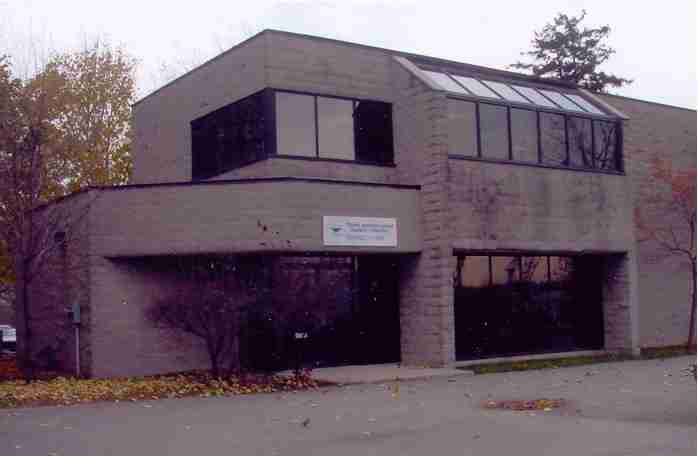OSSTF District 11- Thames Valley
|
District 11 Office |
![]()
![]()
Professional Portfolios
A District 11 OSSTF Resource Pamphlet
Click on any of the headings below to go to that section of this Resource Pamphlet.
Definition: What is a Professional Portfolio?
Rationale: Why should Teachers have a Professional Portfolio?
Pedagogical Underpinnings
Practical Organization: How should a Teacher's Professional Portfolio be organized?
Resources
![]()
Definition: What is a Professional Portfolio?
A Professional Portfolio is a dynamic record of your qualifications and professional growth over time.
Your Portfolio should demonstrate the depth of your commitment to teaching through evidence of your teaching and your students’ learning.
Rationale: Why should Teachers have a Professional Portfolio?
There are many good reasons to maintain a Professional Portfolio:
The OSSTF supports professional standards and professional growth:
| |||||||
The Ontario College of Teachers supports professional standards and
professional growth:
| |||||||
| The Teacher Performance Appraisal system, mandated by the Quality in the Classroom Act 2001, is based upon the “skills, knowledge and attitudes that teachers require” and is designed “to promote professional growth”. It includes an Annual Learning Plan which includes “the teacher’s professional growth objectives, as well as his or her proposed action plan and time lines for achieving those objectives.” (Source: Supporting Teacher Excellence) |
Pedagogical Underpinnings
The suggestions given here for the development of a Professional Portfolio are based upon the Standards of Practice for the Teaching Profession developed by the Ontario College of Teachers and upon which the Teacher Performance Appraisal system is based.
“"What does it mean to be a teacher?" Professional self-regulatory bodies use the term "standards of practice" to refer to the descriptors that answer this question. For the teaching profession, this description includes statements about students and student learning, professional knowledge, teaching practice, leadership and community, and ongoing professional learning.”
The Standards of Practice for the Teaching Profession are organized under five basic principles which are described in the quotations below from the College of Teachers website:
Commitment to Students and Learning
| |||
Professional Knowledge
| |||
Teaching Practice
| |||
Leadership and Community
| |||
Ongoing Professional Learning
|
Practical Organization: How should a Teacher's Professional Portfolio be organized?
| Use a binder | |
| Use dividers within the binder to organize the sections of your portfolio | |
| Use plastic sheet protectors to prevent damage to documents | |
| If you have large documents or objects that you wish to include, use 8 ½ x 11 inch colour photocopies or photographs of them. |
The first section of your Professional Portfolio should contain evidence of your professional and
academic credentials:
|
The remaining sections of your Professional Portfolio should be arranged in
suitable categories. Tip:
Since the Teacher Performance Appraisal program including the Annual
Learning Plan were developed to correspond with The Standards of
Practice for the Teaching Profession, it would be a logical extension to organize your
Professional Portfolio in this way also.
|
Many kinds of things are suitable as evidence of pursuit of
professional growth. The categories of the
Professional Learning
Framework provide a listing of many valuable kinds of professional
growth activities:
|
A good place to look for ideas that would show professional
competence and growth and that you could include in your Portfolio
is the Teacher
Performance Appraisal document itself, specifically the section
which describes the “Look fors” (or Performance Indicators)
listed under each of the sixteen “Competencies”. See Appendices
F and G of that document.
|
When you
engage in any kind of professional growth activity, decide where it best fits
within the five categories.
|
| Your Professional Portfolio should be unique to you and reflect who you are as a teacher and reflective practitioner. |
| It should go without saying, but be sure that your Portfolio does indeed look “professional”. Something that looks shabby or which is disorganized or messy, or which contains errors will reflect poorly on you. |
| Your Professional Portfolio, like your résumé, should be dynamic. It should be updated constantly; as you continue to grow professionally, your Portfolio should show evidence of that. |
Resources
| The Standards of Practice for the Teaching Profession | |
| OSSTF Advice to Members concerning Teacher Performance Appraisals | |
| Teacher Performance Appraisal Checklist | |
| The Teacher Performance Appraisal Manual and Approved Forms and Guidelines can be downloaded from the Ministry of Education's website. |
![]()
District 11 OSSTF Home Page | District Information | Bargaining Units | District Committees | District Magazine | Site Map | OSSTF Provincial Office
![]()
Let us not take thought for our separate
interests, but let us help one another.
(OSSTF Motto)
Revised Friday, October 13, 2006
Send any questions or comments or reports of broken links to the Webmaster.

